You can hear the wind. Not just the wind in the air, rustling trees, rattling lines. Inside, whether a boat or a building, the wind might be imperceptible, until you look outside and see its effect on the world around you.
Yet inside, you can still hear the wind, howling from across the lake, pushing the boat to strain audibly against the lines that hold her to the dock. The wind might push the boat against the dock, creaking against the fenders. Howling, mighty, the wind reminds you of its power, even fully inside the harbor.
David and I were aboard the Wind Rose, a Vancouver 32 closed-cockpit sailboat his parents own, on Lake Champlain. We were trying out living and sailing on the boat over a long weekend. I’m happy to say it was a success, and we hope for a longer journey aboard her soon.
After a Friday evening sail with his parents, who showed us the ropes, as it were, we slept and ate aboard the vessel. This came about in part because so many of the travel restrictions due to Covid require quarantine; here, we were able to minimally quarantine while still having a bit of a holiday.
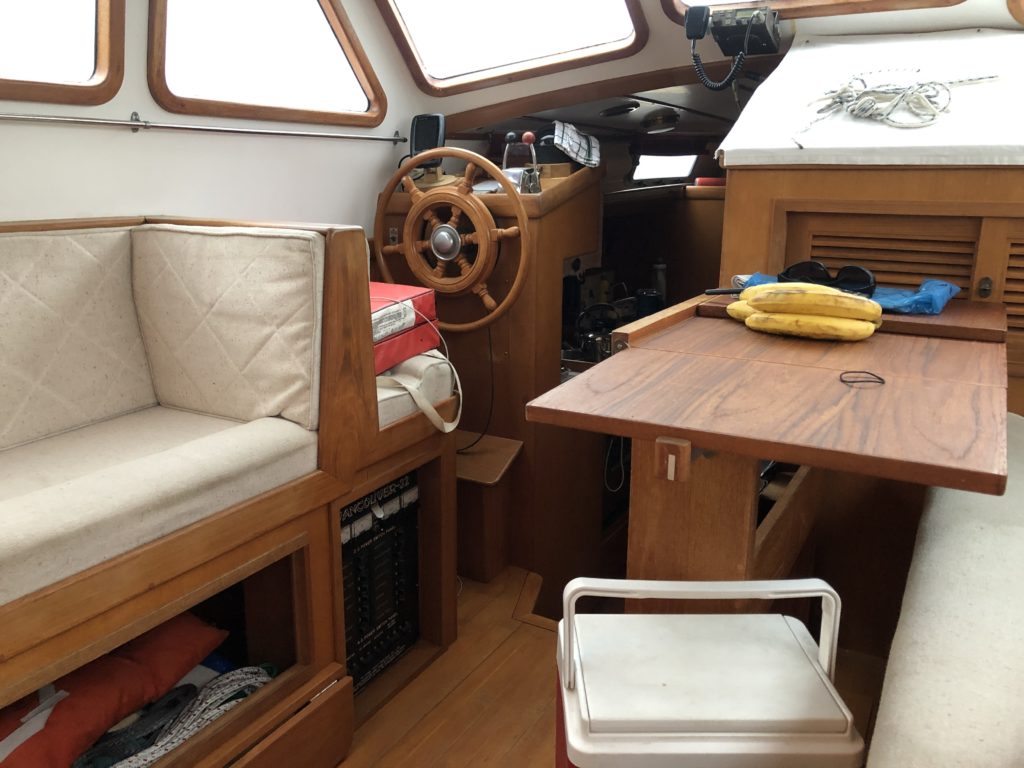
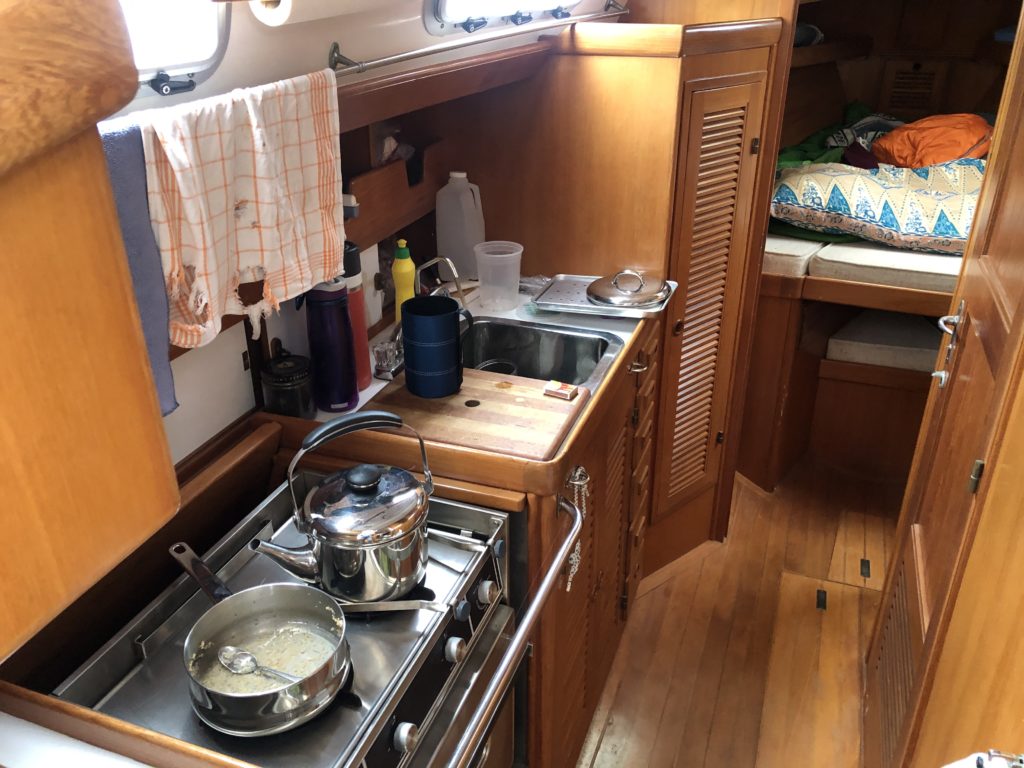
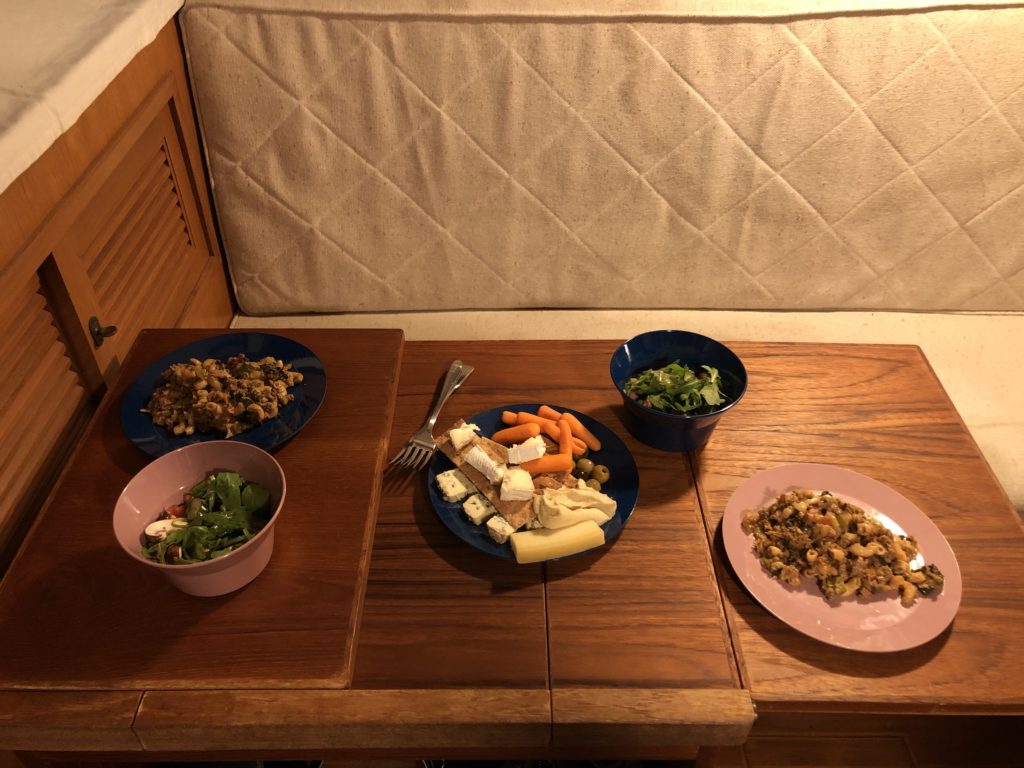
David has taken me sailing a few times on smaller boats. There was a 24-foot boat we rented for a day in Florida; we’ve been out once or twice on a friend’s boat, recently sold; my paddling club has a sunfish, and most recently he’s been part-owner in a 23-foot Oday kept in Piermont, New York, near the Tappan Zee. Mostly, I steer, or work the jib when we tack.
This was my first experience using a wheel for the helm; everything else has had a tiller. That took a bit of getting used to. Gaining a feel for how far to turn the wheel to change course or hold a course took a bit of practice. Additionally, while we did most of the driving from the open cockpit in the back, we made sure to try steering from the closed cockpit position, which offered less visibility in exchange for a bit more shelter from the wind. That was a novel experience.
The Wind Rose is also by far the largest vessel we’ve sailed. At thirty-two feet overall, she was steady and more reassuring in bigger waves. Fortunately, her size belies her handling; she turns very quickly, and in the world of sailing, and handled well both jib-only as well as main-only.
Day 1
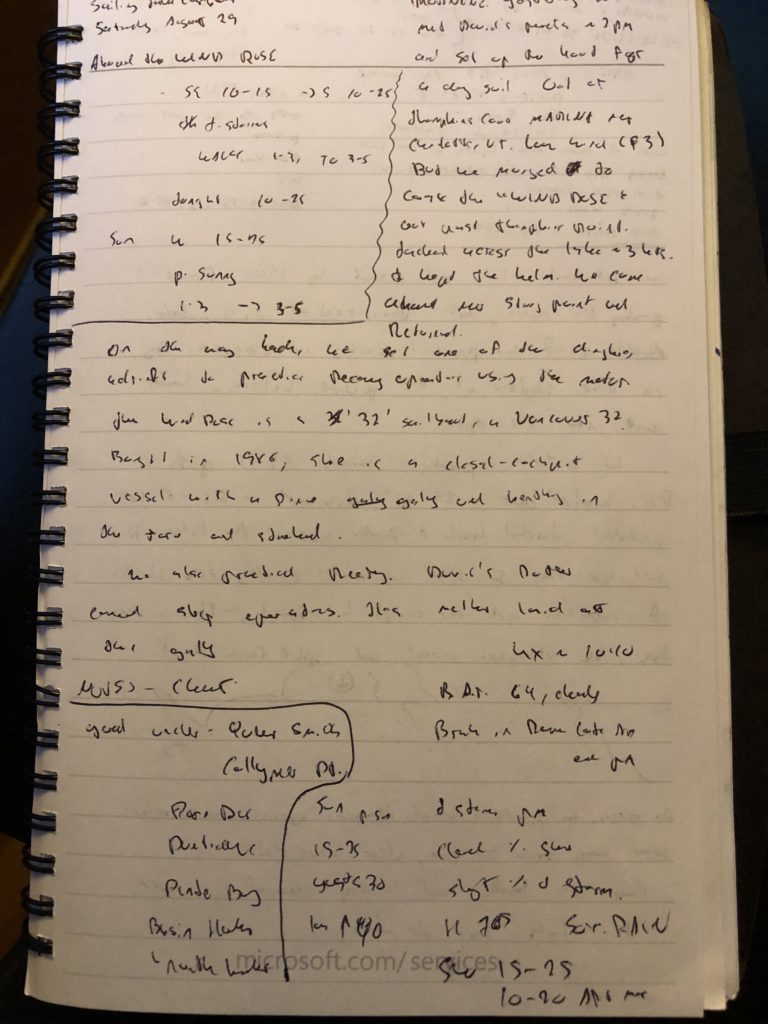
SATURDAY AUGUST 29
SE 10-15 growing to S 10-25; chance of thunderstorms.
Yesterday we met with David’s parents ~2PM and set up the boat for a day sail out of Thompsons Cove Marina, near Charlotte, VT. Low wind (F3), but we managed to coax he Wind Rose out past Thompsons Point. Tacked across the lake ~3 hours. I kept the helm. We came about to Split Rock Point and returned. On the way back, we set one of the two dinghies adrift to practice recovery operations using he motor. The Wind Rose is a 32 foot sailboat, a Vancouver 32. Built in 1986, she is a closed-cockpit vessel with a fine galley, and berthing in the fore and starboard. We practiced reefing. David’s father commanded ship operations. His mother laid out the galley operations. We were given a list of potential destinations to sail should conditions prove charitable.
Unfortunately, our sailing plans were curtailed by the weather. High winds predominated, in the F5-F6 category, gusts to F7 (16-25 mph, gusting to 30). Thunderstorms were predicted Saturday. Coupled with this being the first time David would be sailing the Wind Rose, and our limited area knowledge, we stayed in Saturday, although by the end it was evident that the worst of the conditions had passed to the east.
We pored over the weather all weekend: the synoptic over the radio, radar maps and raw data on our phones. How strong would the wind be? From which direction? What about wave height? Lake Champlain is notorious for winds running north and south, the long, relatively skinny lake offering plenty of fetch for the wind to grab the surface of the water and push it into mighty waves.
Ultimately we stayed in, reading, talking, learning how the boat’s systems worked. The galley proved quite usable, with a built-in icebox, propane cooking range, and tanks for water and fuel.
Day 2
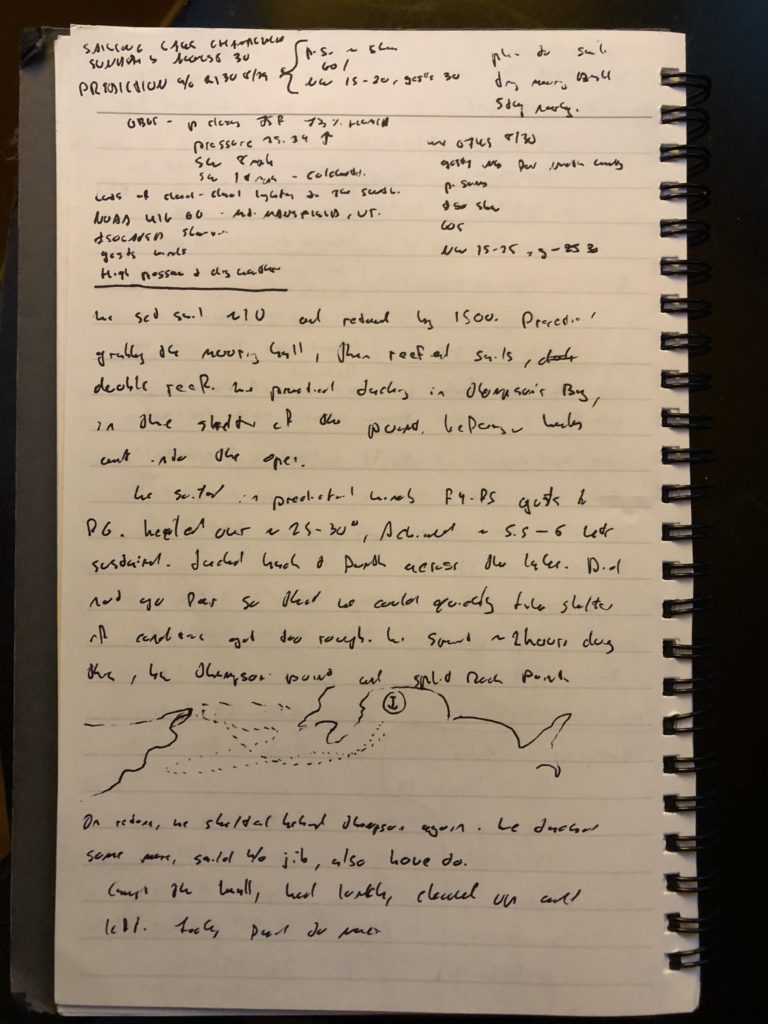
SUNDAY AUGUST 30
Isolated showers, gusts of wind. High pressure system and dry weather coming in from the west. P cloudy 75 F, pressure 29.34 and climbing. Winds NW 15-20, gusts to 30.
We set sail ~10 and returned by 1500. Practiced grabbing the mooring ball, then reefed sails, double reef. We practiced tacking in Thompsons Bay, in the shelter of the point before heading out into the open. We sailed in predicted winds of F4-F5, gusts to F6. Heeled over 20-30 degrees (?), achieved 5.5 to 6 kts sustained. Tacked back and forth across the lake. Did not go far so that we could quickly take shelter if conditions got too rough. Spent ~2 hours doing this, between Thomspons Point and Split Rock Point. On return, we sheltered behind Thompsons again. We tacked some more, sailed without jib, also hove to. Caught the ball, had lunch, cleaned up and left. Looking forward to next.
Day 3
Sunday was our big sail. We were underway by 10, and returned a bit before 3. The first thing we did after leaving the slip was to practice grabbing the mooring ball and tying up, which was easier than anticipated. We then tacked back and forth in the shelter of Thompsons Point; with the wind from the northwest, the point protected us from the brunt of the wind while we got a feel for the boat’s handling, and our ability to handle her. We could see bigger water out past the point.
Eventually we set out, and oh my did we catch some wind. We heeled over and our speed ramped up considerably; we touched seven knots but were generally cruising in the five to six knot range. We did not go far; our thinking was that we wanted to be able to quickly duck back behind the point if conditions became too much. Essentially, we tacked back and forth across the lake.
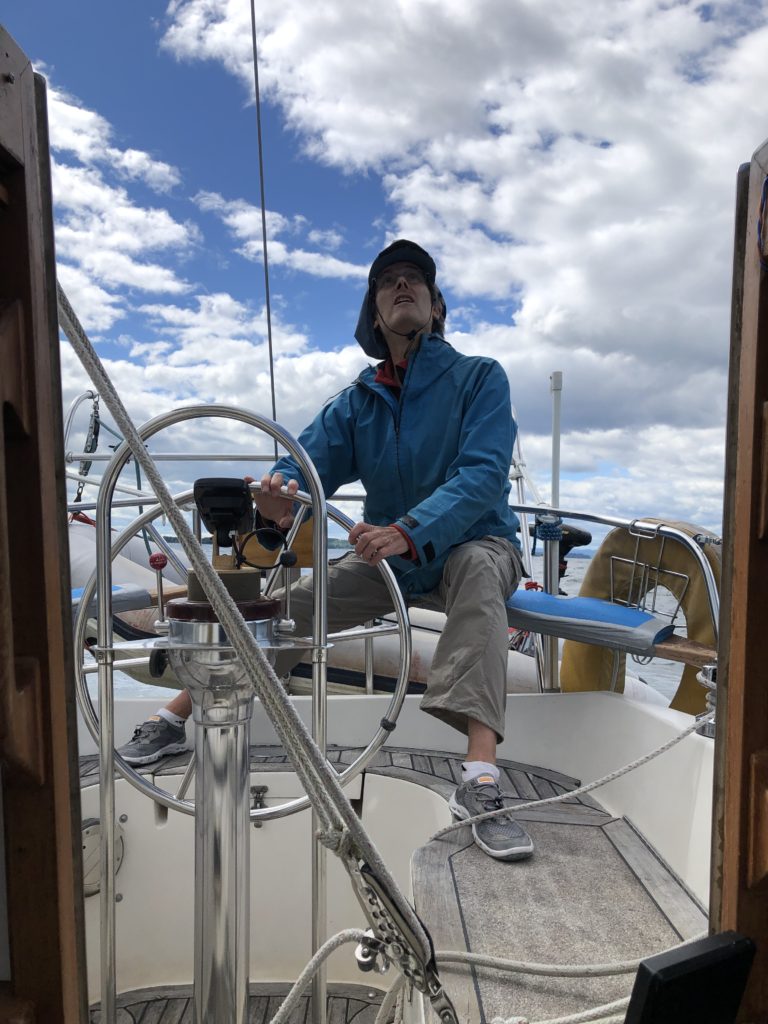
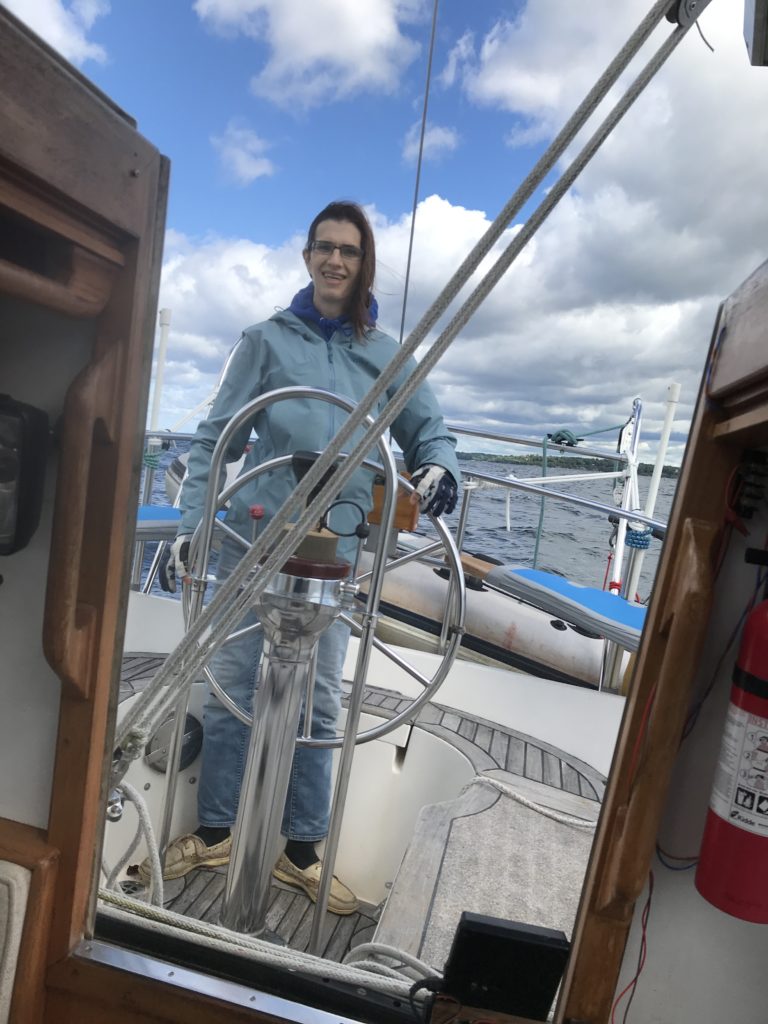
While it was exciting, I have to admit that after a while I was a bit queasy, and didn’t want to prepare lunch while slapping bow against the waves, which were solidly in the two-foot range. We pulled in behind the point and compared strategies of vessels heading out; one was under full sail, another was jib only. We later saw a motor boat being towed back by the marina’s crane rig.
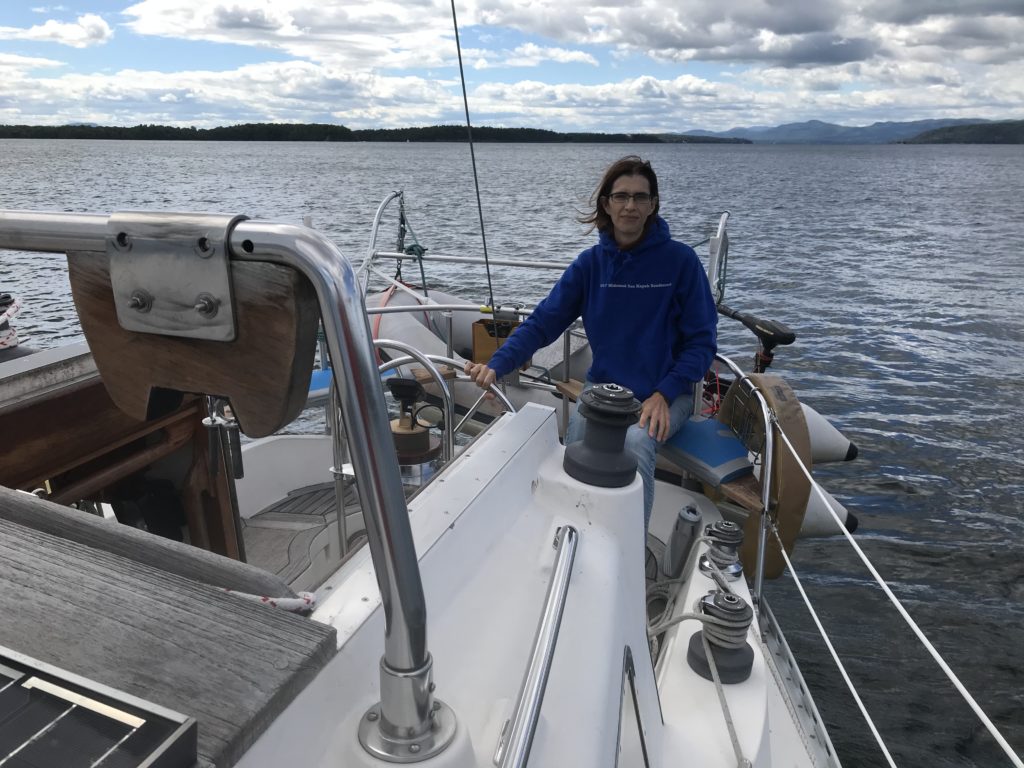
When we decided to try and heave too, it turned out his parents were on shore, watching, and apparently we didn’t look too shabby in our efforts. Stopped, barely moving sideways, we took a much-needed break.
When we were done, we started the long process to break things down. Caught the ball, lowered the sails, cleaned the berths, head, and galley, gathered our belongings. We left her ship-shape, and took the dinghy back to shore.
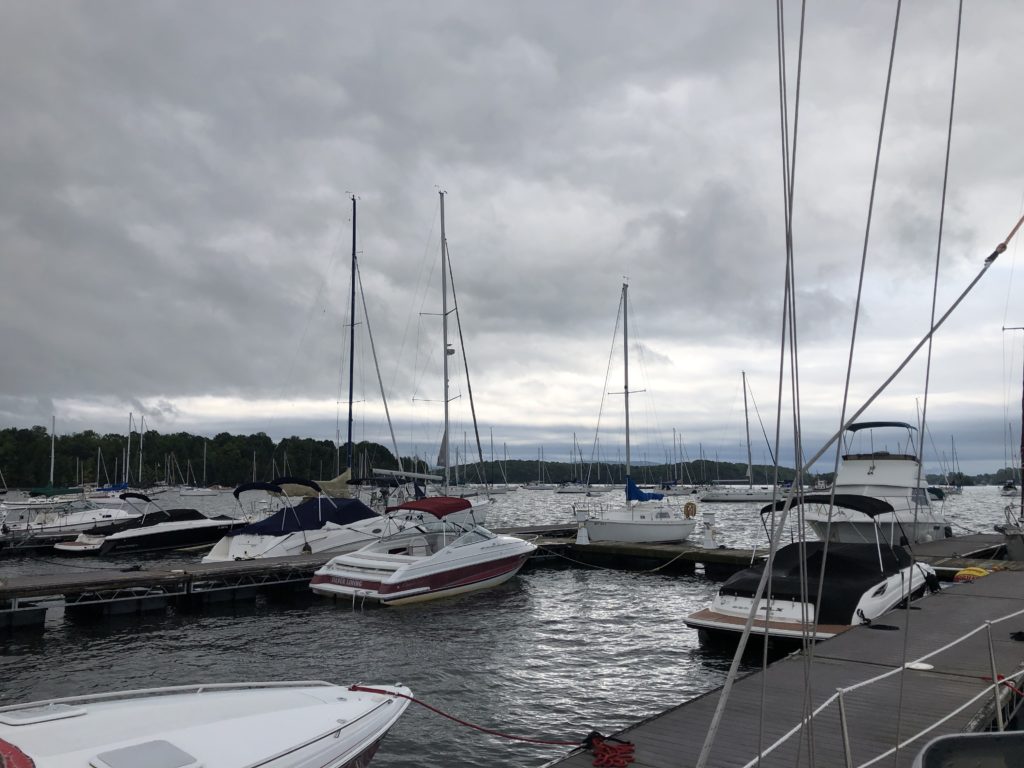
1 thought on “A Short Sail”